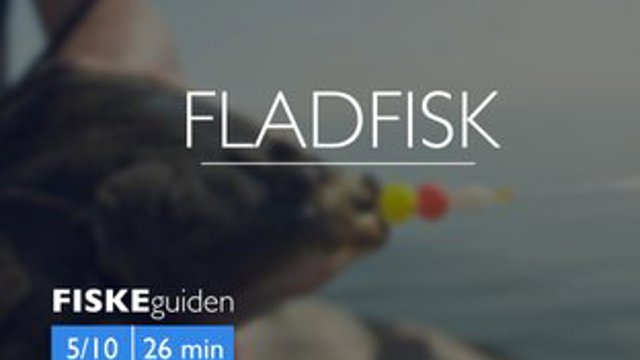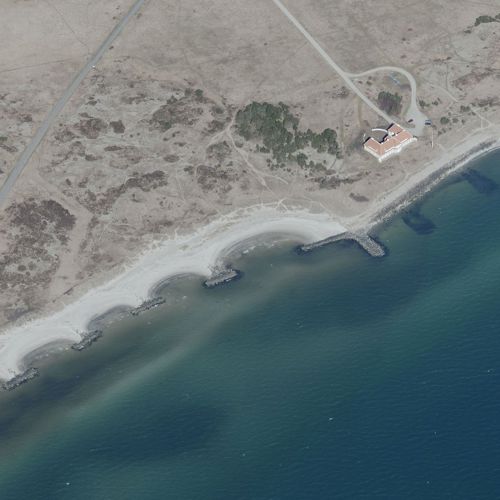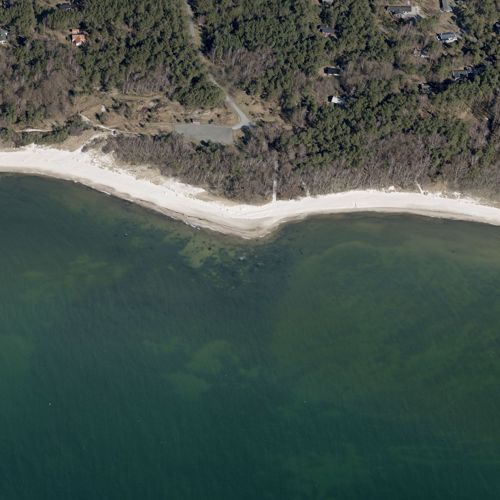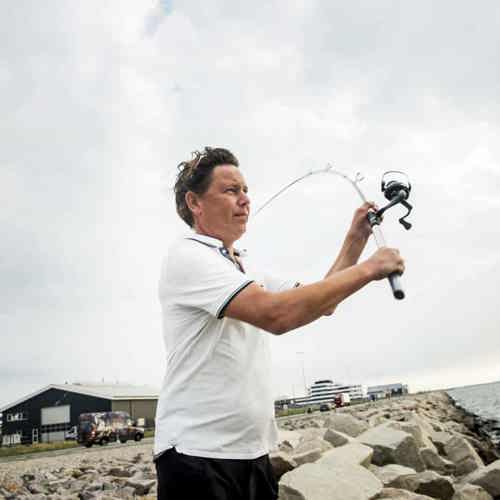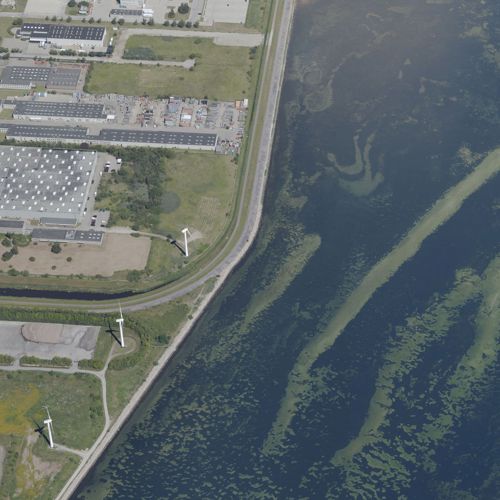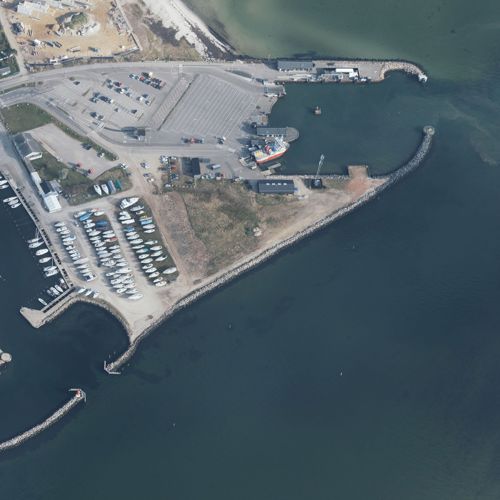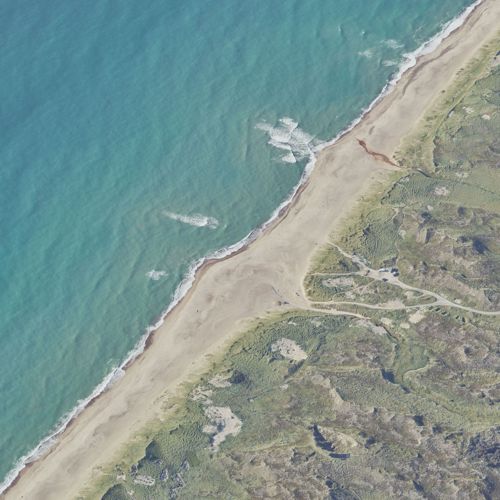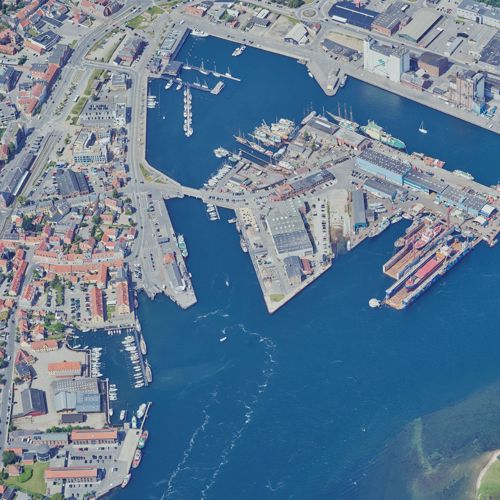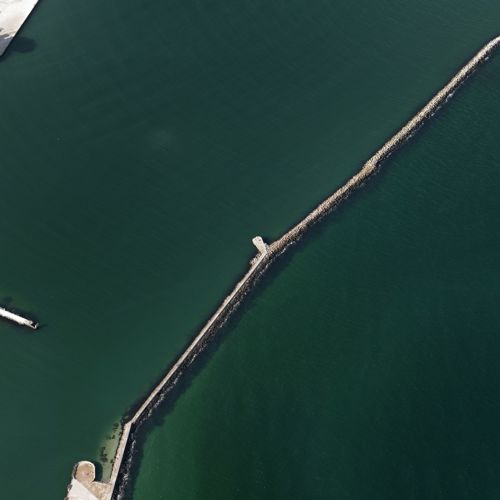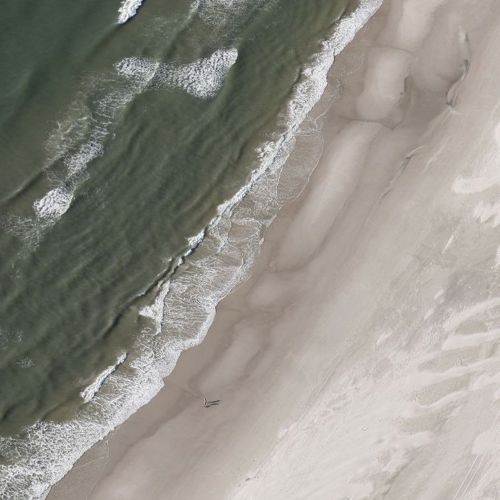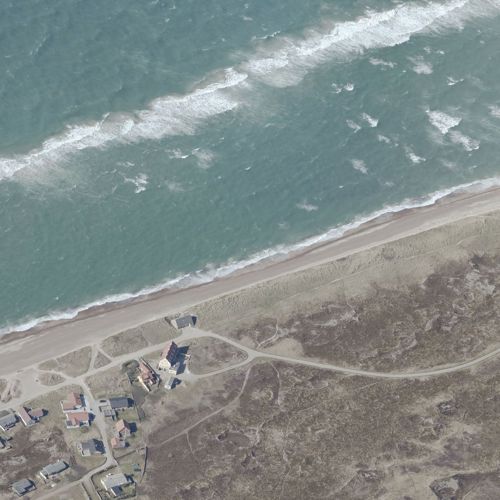Flatfish are some of the easiest edible fish to catch along the Danish coasts, and catching flatfish is for the whole family. The road to success in this type of fishing isn’t long, and you never know for sure which fish discovers your tackle with lugworm or a strip of herring.
This type of fishing can be done all over Denmark all year, but it’s especially good during late summer and fall. If you find a particularly good fishing spot, you can look forward to a lot of action and a lot of biting fish.
The word “flatfish” covers an array of species that visit our coasts through the seasons, and here you can read about the three most common types.
Plaice
The plaice is perhaps the most well-known flatfish in Denmark. It stands out with its large, red spots and smooth topside. Like other flatfish, it changes color according to the bottom on which it resides. Plaice caught on a sandy bottom are often light brown, whereas plaice caught near kelp are mostly dark brown.
Fishing for plaice is often action-packed fishing with aggressive biting and fighting when the plaice swallows your bait. And it is a sure winner at the dinner table as well. Who doesn’t like fried fish with remoulade and fries?
Flounder
The flounder is the most common flatfish in Danish waters, but it’s mostly seen on the eastern coast of Jutland. It can be caught from piers and harbors all around Denmark, and the fish is great for eating. The flounder is characterized by the rough skin on its top side and the white on its belly.
The flounder likes to group up, and you’ll often find more that one in the same area.
Dab
The common dab is not encountered as frequently as the plaice or the flounder, and they don’t reach the size of their cousins either. Some people prefer eating dab, as it’s very lean and thus particularly good for smoking. In Denmark, it’s tradition to dry the dab in the dry, salty wind by the west coast. This is especially common on Fanø where the locals call this delicacy “bakskuld”. The little dabs are often referred to as stamps, as they are quite small and almost translucent when held to the light.
Turbot
Aside from the Atlantic halibut, the turbot is the largest flatfish found in Denmark. It has become a very attractive game fish, as it is very delicious and can be found close to land along the Danish coasts. The turbot can grow very big compared to other flatfish, and it is not uncommon to catch one weighing over 4 kilograms in Denmark. This type of fishing is quite active, and you are sure to be challenged when a turbot bites – they just won’t quit!
Although regulations for minimum size limits don’t mention it, a good rule of thumb is to not keep flatfish under 30 centimeters. Small flatfish are nearly impossible to clean without ruining the fish. So if you want a proper piece of fish for dinner, 30 centimeters is a good minimum size to keep in mind.
| |
The North Sea including the Limfjord and Ringkøbing Fjord
|
The Skagerrak and Kattegat
|
The Belts and the Baltic Sea
|
|
Plaice
|
27 cm
|
27 cm
|
25 cm
|
|
Flounder
|
25.5 cm
|
25.5 cm
|
Sub area
22-25: 23 cm
26-28: 21 cm
29-32: 18 cm
|
|
Dab
|
None
|
None
|
None
|
|
Turbot
|
None
|
None
|
30 cm
|
Read more about minimum size limits as well as open and closed seasons at fiskeristyrelsen.dk
The only closed seasons for plaice and dab are in Flensburg Fjord. The flounder has a number of special closed seasons in different zones of the Baltic Sea, so it is important to familiarize yourself with these minimum size limits before fishing. Read more about minimum size limits here
Common for all flatfish is that they hunt much more actively than we once thought. In the 1980s, everyone fished for flatfish by letting the bait lie on the bottom while waiting for the fish. But the best anglers, who have specialized in catching flatfish, have since discovered that the flatfish like to actively hunt for their food. This is why many have begun spinning their leader slowly across the bottom. In this case, spinner blades, beads, and colored crimps, etc. are supposed to be very effective because they draw extra attention during the spinning. The colorful leader can be bought as a complete package in most tackle shops, or you can bind them yourself.

From pier and boat
In order to cast effectively with heavier leader gear, it’s ideal to use a spinning rod with a higher casting weight than usual. If you are fishing flatfish from pier and boat, heavier leader gear is often necessary to keep the bait at the bottom amid currents and waves. A spinning rod with a casting weight of 60-100 grams is best for heavier fishing with an addition of a spinning reel between sizes 3000-4000 and braided line of 0.25 millimeters (nylon 0.45 millimeters).
The good gear
From pier to boat
- Rod with a casting weight of 60-100 grams
- Reel in size 3000-4000
- Braided line of 0.25 millimeters
From coast to dinghy
- Rod with a casting weight of 20-40 grams
- Reel in size 2500-4000
- Braided line of 0.15-0.20 millimeters
From coast
As mentioned previously, it is possible to catch flatfish from the coast where heavier gear is not necessary. A spinning rod with a casting weight of 20-40 grams can do most of the work. In addition, you should use a spinning reel in size 2500-4000 with a 0.20 millimeter braided line (0.35 millimeter nylon).
The paternoster rig
Flatfish are usually caught using natural bait, but artificial bait or lures such as “GULP” have become very popular in recent years. That said, a live lug- or ragworm is always preferable.
The type of fishing that comes to mind when most think about flatfish is the classic bottom fishing with the so-called paternoster rig, which you can buy in most tackle shops. The rig consists of a sinker of typically 40-60 grams along with two single hooks that are separated from the main line by a so-called crimp. This mostly looks like a straw preventing the bait from getting caught in the main line when casting.
You can fish with rig in a stationary manner where the smell of the bait attracts the fish. But you can often gain an edge by moving the bait around and covering more of the seabed. Flatfish primarily hunt by night as they bury themselves in the sand and hide from their enemies by day. This is yet another reason for active fishing.
Dragging rig
A dragging rig is advantageous, as it can cover much more of the seabed by fishing actively at the location of the fish. This rig excels by having a hook attached behind the sinker and is especially popular when fishing from boat or pier in deep waters with a sandy seabed. Many anglers replace the ordinary sinker with a pirk or the like to enhance the liveliness of the rig even further.
 Fishing spots
Fishing guide
Associations and water care
Information and rules
Explore Denmark
Fishing spots
Fishing guide
Associations and water care
Information and rules
Explore Denmark






